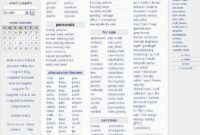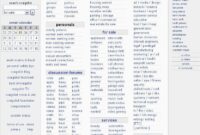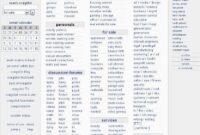Hot Shot Trucks And Trailers For Sale: Your Comprehensive Guide to Entering the Expedited Freight Market pickup.truckstrend.com
The world of logistics is constantly evolving, driven by an insatiable demand for faster, more flexible, and often, smaller-scale shipping solutions. This is where "hot shot" trucking steps into the spotlight. Far from the behemoth Class 8 rigs hauling full truckloads, hot shot operations specialize in expedited, time-sensitive, and often unique loads that don’t fill a traditional 53-foot trailer. For aspiring entrepreneurs or seasoned drivers looking for a different niche, investing in hot shot trucks and trailers for sale represents a significant entry point into a dynamic and potentially lucrative segment of the transportation industry.
This comprehensive guide will navigate the intricate landscape of acquiring the right hot shot equipment, from understanding the business model itself to selecting the ideal truck and trailer combination, exploring financing options, and preparing for the road ahead. Whether you’re a first-time buyer or looking to upgrade your fleet, equipping yourself with knowledge is the first crucial step towards success.
Hot Shot Trucks And Trailers For Sale: Your Comprehensive Guide to Entering the Expedited Freight Market
What is Hot Shot Trucking and Why It’s Growing?
Hot shot trucking involves hauling smaller, often urgent loads with a medium-duty truck (typically a Class 3-6 pickup or chassis cab) and a specialized trailer. Unlike less-than-truckload (LTL) carriers that consolidate multiple shipments, hot shot truckers often carry a single, dedicated load directly from point A to point B, offering unparalleled speed and flexibility.
The growth of hot shot trucking can be attributed to several factors:
- E-commerce Boom: Increased demand for rapid delivery of specialized goods, parts, and equipment.
- "Just-in-Time" Logistics: Businesses rely on quick replenishment of inventory, making expedited freight essential.
- Niche Market Demand: Hauling anything from construction materials and oilfield equipment to luxury vehicles, agricultural machinery, or emergency parts.
- Lower Barrier to Entry: Compared to traditional OTR (Over-the-Road) trucking, hot shot typically requires a smaller initial investment and, in some cases, a less stringent licensing requirement (though a CDL is often beneficial or necessary).
- Owner-Operator Friendly: The business model is highly adaptable for independent owner-operators who value autonomy and direct client relationships.
For those looking to capitalize on this growing demand, the first and most critical step is acquiring the right tools for the job: reliable hot shot trucks and trailers.
Understanding Hot Shot Trucks: Key Considerations for Purchase
The truck is the backbone of your hot shot operation. Choosing the right one involves balancing power, reliability, comfort, and compliance with regulations.

Truck Types for Hot Shot Operations:
- Heavy-Duty Pickups (Class 3-5):
- Examples: Ford F-350/450/550, Ram 3500/4500/5500, Chevrolet/GMC Silverado/Sierra 3500/4500/5500.
- Pros: Most common entry point, relatively lower initial cost, comfortable ride, often dual-purpose (work/personal), widely available parts and service.
- Cons: Can be limited by Gross Combined Weight Rating (GCWR) for heavier loads, faster wear on components if consistently overloaded.

- Medium-Duty Chassis Cabs (Class 4-6):
- Examples: Ford F-650/750, Ram 6500, Freightliner M2, International CV, Hino, Isuzu.
- Pros: Higher GCWR, more robust components (suspension, brakes, frame), built for commercial duty, longer lifespan under heavy loads, often come with air brakes and air ride suspension.
- Cons: Higher initial cost, less comfortable ride, larger turning radius, less fuel-efficient than pickups.
Essential Truck Specifications:
- Engine & Drivetrain: Diesel engines (Cummins, Power Stroke, Duramax) are almost universally preferred for their torque, longevity, and fuel efficiency under load. Look for strong horsepower and, more importantly, high torque ratings. Automatic transmissions are common and convenient, but some prefer manual for greater control.
- Gross Vehicle Weight Rating (GVWR) & Gross Combined Weight Rating (GCWR): Crucial for legal compliance and safety. GVWR is the maximum operating weight of the truck itself. GCWR is the maximum combined weight of the truck, trailer, and load. Ensure your truck’s GCWR can handle the heaviest loads you anticipate hauling.
- Axle Ratios: Lower axle ratios (e.g., 3.73, 3.55) are better for fuel economy at highway speeds, while higher ratios (e.g., 4.10, 4.30) provide more pulling power for heavy loads and steep grades.
- Suspension: Heavy-duty leaf springs are standard, but air ride suspension offers a smoother ride for the driver and less shock to the cargo, which can be critical for sensitive loads.
- Brakes: Exhaust brakes or engine brakes are vital for controlling speed on descents and reducing wear on service brakes. Ensure the braking system is adequate for the GCWR.
- Mileage & Condition (Used Trucks): For used trucks, a detailed maintenance history is paramount. High mileage isn’t always a deal-breaker if the truck has been well-maintained. Look for rust, frame damage, signs of abuse, and inspect tires, brakes, and fluid levels.
Choosing the Right Hot Shot Trailer: Types and Features
The trailer is just as critical as the truck, dictating the types of loads you can haul and your overall operational efficiency.
Common Hot Shot Trailer Types:
- Flatbed Trailers:
- Description: The most versatile and common type, with an open deck for easy loading/unloading.
- Pros: Can haul a wide variety of goods (machinery, building materials, vehicles, odd-shaped items).
- Cons: Cargo needs to be properly secured and protected from elements.
- Deck Over Trailers:
- Description: Similar to a flatbed but with the deck positioned over the wheels, allowing for a wider usable deck space (typically 102 inches).
- Pros: Ideal for wider loads that wouldn’t fit between fender wells.
- Cons: Higher deck height can make loading heavier items more challenging.
- Lowboy / Drop Deck Trailers:
- Description: Feature a lower deck section in the middle, ideal for taller equipment.
- Pros: Allows transport of oversized or tall machinery without exceeding height restrictions.
- Cons: More specialized, less versatile for general cargo.
- Enclosed / Box Trailers:
- Description: Fully enclosed trailers for secure, weather-protected transport.
- Pros: Protection from elements and theft, ideal for sensitive or high-value goods.
- Cons: Limited to cargo that fits through the doors, heavier than flatbeds, higher wind resistance.
- Specialty Trailers: Car haulers, tilt decks, utility trailers, dump trailers – chosen for specific niches.
Essential Trailer Specifications:
- Gooseneck vs. Bumper Pull:
- Gooseneck: Attaches to a hitch in the truck bed. Offers superior stability, maneuverability, and higher weight capacity. Preferred for serious hot shot operations.
- Bumper Pull: Attaches to a receiver hitch at the truck’s rear bumper. Simpler, but less stable and lower capacity. Suitable for lighter, occasional hot shot work.
- Length & Width: Common lengths range from 20 to 40 feet. Width is typically 102 inches (legal maximum without wide load permits).
- Axles: Tandem (two) or triple (three) axles. Triple axles offer higher weight capacity and better weight distribution but increase tire scrub during turns.
- GVWR & Payload Capacity: Ensure the trailer’s GVWR (Gross Vehicle Weight Rating) and payload capacity meet or exceed your typical load requirements.
- Ramps: Crucial for loading equipment. Options include fold-over ramps, spring-assisted ramps, hydraulic ramps, or removable stand-up ramps.
- Tires & Brakes: Commercial-grade tires are a must. Electric brakes are standard, but air brakes (requiring a truck with air brake capability) offer superior stopping power for heavier loads.
- Deck Material: Wood decks (treated lumber) are common, offering good grip. Steel decks are more durable but can be slippery when wet.
Where to Find Hot Shot Trucks and Trailers For Sale
The market for hot shot equipment is robust, with options for new and used vehicles.
- Online Marketplaces:
- Commercial Specific: TruckPaper.com, CommercialTruckTrader.com, MyLittleSalesman.com.
- General: eBay Motors, Craigslist, Facebook Marketplace (local groups).
- Dealerships:
- New: Authorized dealers for Ford, Ram, GM, Freightliner, International, etc.
- Used: Specialized commercial truck and trailer dealerships often have a good selection of hot shot-ready equipment.
- Auctions: Ritchie Bros. Auctioneers, IronPlanet, local public auctions. Can offer good deals but require thorough inspection and quick decision-making.
- Brokers & Specialists: Companies that specialize in sourcing and selling commercial vehicles.
- Networking: Trucking forums, industry events, and word-of-mouth can uncover private sales.
Financing Your Hot Shot Equipment
Securing financing is often a critical step. Options include:
- Traditional Bank Loans: Often offer competitive rates but can have stricter requirements.
- Equipment Financing Companies: Specialize in commercial vehicle loans, sometimes offering more flexible terms for businesses with less established credit.
- Leasing Options: Can be attractive for tax benefits and lower upfront costs, but you won’t own the asset at the end of the term (unless it’s a finance lease).
- SBA Loans: Government-backed loans for small businesses.
Prepare a solid business plan, understand your credit score, and have a down payment ready to improve your chances of approval and secure better rates.
Important Considerations Before Buying
Before you commit to a purchase, consider these vital aspects:
- Budget Beyond Purchase Price: Factor in insurance (liability, cargo, physical damage), maintenance, fuel, registration, licensing, ELD (Electronic Logging Device), and any necessary upgrades or tools.
- Business Plan: What types of loads will you primarily haul? This dictates the necessary truck and trailer specifications. Will you run regionally or long-haul?
- DOT Regulations & Licensing: Understand CDL requirements (generally needed if your GCWR exceeds 26,001 lbs, or if hauling placarded HazMat), federal DOT numbers, motor carrier (MC) numbers, weight limits, and Hours of Service (HOS) rules.
- Insurance: This is a major ongoing cost. Get quotes early from reputable commercial trucking insurers.
- Maintenance History: For used equipment, a complete service record is invaluable. If unavailable, budget for comprehensive inspections and potential repairs.
- Pre-Purchase Inspection: Always get a professional, independent mechanic to inspect any used truck or trailer before purchase. This can save you from costly hidden problems.
Tips for a Successful Hot Shot Equipment Purchase
- Do Your Research: Understand market values, common issues with specific makes/models, and what equipment is best suited for your intended operations.
- Inspect Thoroughly: Beyond the mechanical inspection, check tires, lights, brakes, frame, suspension, and overall condition of both the truck and trailer. Look for signs of neglect or hard use.
- Negotiate: Don’t be afraid to negotiate the price, especially for used equipment.
- Factor in Hidden Costs: Title transfer fees, taxes, inspection fees, and initial repairs can add up.
- Get Everything in Writing: Ensure all agreements, warranties (if any), and conditions are clearly documented.
Sample Hot Shot Truck and Trailer Price Table
Please note: These are estimated price ranges and can vary significantly based on make, model, year, mileage, condition, features, geographic location, and market demand. New equipment prices are MSRP, and used prices are for good to excellent condition.
| Item Type | Specific Type/Capacity | New Price Range (USD) | Used Price Range (USD) | Key Factors Affecting Price |
|---|---|---|---|---|
| Hot Shot Truck | ||||
| Heavy-Duty Pickup (Class 3) | Ford F-350, Ram 3500, Chevy 3500 (SRW/DRW) | $60,000 – $95,000+ | $30,000 – $70,000 | Engine, trim level, 4×4, mileage, condition, dually vs. SRW |
| Heavy-Duty Pickup (Class 4/5) | Ford F-450/550, Ram 4500/5500, Chevy 4500/5500 | $75,000 – $120,000+ | $40,000 – $90,000 | Chassis type, engine, suspension, mileage, condition |
| Medium-Duty Truck (Class 6) | Freightliner M2, Ford F-650/750, International CV | $100,000 – $180,000+ | $50,000 – $120,000 | Air brakes, air ride, engine size, cab configuration, mileage |
| Hot Shot Trailer | ||||
| Flatbed Gooseneck (25-30 ft) | Tandem Axle, 14K-20K GVWR | $10,000 – $18,000 | $5,000 – $12,000 | Deck material, ramp type, axle rating, brand, condition |
| Flatbed Gooseneck (35-40 ft) | Tandem Axle, 20K-25K GVWR | $18,000 – $28,000 | $10,000 – $20,000 | Axle rating, frame strength, tire condition, added features |
| Flatbed Gooseneck (35-40 ft) | Triple Axle, 25K-30K GVWR | $25,000 – $35,000+ | $15,000 – $25,000 | Axle rating, suspension type, deck over vs. standard |
| Enclosed Gooseneck (28-34 ft) | Varies by height/width | $20,000 – $45,000+ | $10,000 – $30,000 | Interior finish, ramp door type, insulation, cargo capacity |
| Specialty (Car Hauler, Tilt) | Varies by capacity | $15,000 – $30,000+ | $8,000 – $20,000 | Number of cars, hydraulic tilt, features |
Frequently Asked Questions (FAQ)
Q1: Do I need a CDL (Commercial Driver’s License) for hot shot trucking?
A1: It depends. If your Gross Combined Weight Rating (GCWR) – the combined weight of your truck, trailer, and load – exceeds 26,001 lbs, or if you transport placarded hazardous materials, you will need a CDL (typically Class A). Many hot shot operations, especially with heavy-duty pickups and larger gooseneck trailers, will exceed this limit.
Q2: What is the best truck for hot shot trucking?
A2: There’s no single "best" truck. For lighter hot shot loads and entry-level operations, a Ford F-450/550, Ram 4500/5500, or equivalent Chevy/GMC 4500/5500 is often preferred. For heavier, more consistent loads, a Class 6 medium-duty truck like a Freightliner M2 or Ford F-650/750 offers greater durability and capacity. The "best" truck depends on your specific business plan and anticipated load types.
Q3: How much does hot shot insurance cost?
A3: Insurance costs vary widely based on your driving record, location, type of cargo, coverage limits, and the value of your equipment. Expect to pay anywhere from $8,000 to $15,000+ per year for full commercial coverage (liability, cargo, physical damage). Get multiple quotes from commercial trucking insurance providers.
Q4: What kind of loads do hot shot truckers typically haul?
A4: Hot shot truckers haul a diverse range of loads, including:
- Oilfield equipment and parts
- Construction materials and small machinery
- Automotive parts or vehicles (e.g., luxury cars, classic cars)
- Expedited freight for manufacturing or industrial clients
- Agricultural equipment
- Emergency parts for breakdowns
- Specialty goods that require dedicated, time-sensitive transport.
Q5: Is hot shot trucking profitable?
A5: Yes, hot shot trucking can be very profitable, but it requires diligent planning, efficient operation, and strong business acumen. Success depends on finding good loads, managing expenses (fuel, maintenance, insurance), and providing excellent customer service. It’s a demanding business that rewards hard work and smart decisions.
Q6: Should I buy new or used hot shot equipment?
A6: Both new and used options have pros and cons. New equipment offers reliability, warranties, and the latest technology but comes with a higher upfront cost and faster depreciation. Used equipment is more affordable, allowing for a lower barrier to entry, but carries higher risk of unforeseen repairs and requires thorough pre-purchase inspections. Many start with reliable used equipment to minimize initial capital outlay.
Conclusion
The market for hot shot trucks and trailers for sale offers a compelling opportunity for individuals and businesses looking to enter or expand within the expedited freight sector. The key to success lies not just in acquiring equipment, but in making informed decisions about the right equipment for your specific business goals.
By thoroughly researching truck and trailer types, understanding critical specifications, knowing where to source equipment, planning your financing, and being acutely aware of the regulatory and operational considerations, you can lay a strong foundation for a thriving hot shot operation. With the right truck, the right trailer, and a robust business plan, the open road of hot shot trucking awaits.



